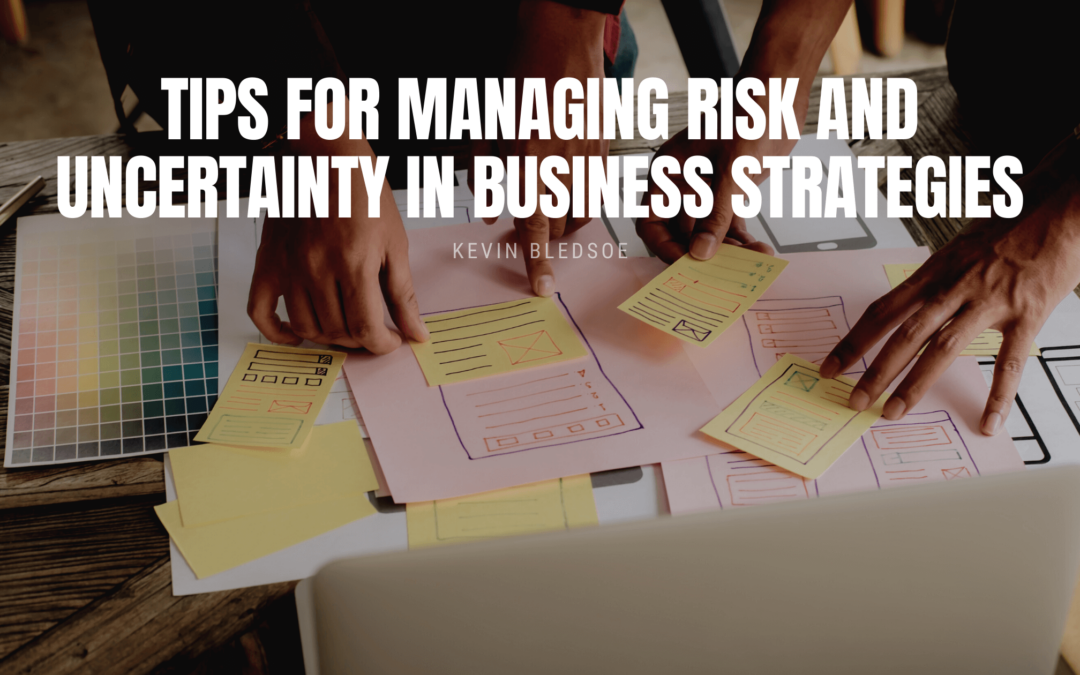Managing risk and uncertainty is essential for long-term success and growth in today’s dynamic business landscape. While it’s impossible to eliminate risk, it can be mitigated and managed effectively through thoughtful strategies. Here are some valuable tips for business leaders on navigating risk and uncertainty in their strategic decision-making process.
Conduct thorough risk assessments:
Before implementing any business strategy, conducting a comprehensive risk assessment is crucial. Identify potential risks, both internal and external that could impact your business objectives. This includes analyzing market trends, competitive landscape, regulatory changes, technological advancements, and financial risks. Understanding the potential risks allows you to develop contingency plans and allocate resources accordingly.
Foster a culture of risk awareness:
Create a culture within your company that encourages employees to identify and manage risks proactively. Establish clear communication channels and facilitate open discussions about potential risks and uncertainties. Encourage employees to use critical thinking and share their insights on risk management. By fostering a risk-aware culture, you can tap into the team’s intelligence and address risks more effectively.
Diversify your business portfolio:
Diversification is a crucial strategy for managing risk and uncertainty. Relying heavily on a single product, market, or customer increases vulnerability to unexpected changes. Explore opportunities to diversify your product/service offerings, expand into new markets, or target different customer segments. By diversifying your business portfolio, you reduce the impact of potential risks on your overall business performance.
Develop contingency plans:
Preparing for the unexpected is vital for managing uncertainty. Develop contingency plans for various scenarios that could disrupt your business operations. This includes having backup suppliers, creating emergency funds, and establishing alternative distribution channels. A well-defined plan will enable your organization to respond swiftly and effectively when unforeseen events occur.
Embrace technological advancements:
Technological innovations can provide valuable tools for managing risk and uncertainty. Explore artificial intelligence, data analytics, and automation technologies to gain insights, enhance decision-making, and streamline processes. Leveraging technology improves operational efficiency and helps identify and mitigate potential risks.
Stay informed and adaptable:
In today’s rapidly changing business environment, staying informed is crucial. Keep a pulse on industry trends, market shifts, and emerging technologies. Stay updated on regulatory changes and geopolitical developments that could impact your business. Being aware and adaptable allows you to adjust your strategies proactively and make informed decisions in the face of uncertainty.
Build strategic partnerships:
Collaborating with strategic partners can help mitigate risks and share the burden of uncertainty. Seek out partnerships with complementary businesses, suppliers, or industry associations. Joint ventures and alliances can provide access to new markets, expertise, and resources, reducing the risks of entering unfamiliar territories.
Continuously monitor and evaluate:
Risk management is an ongoing process. Monitor key metrics and performance indicators to identify early warning signs of potential risks. Regularly evaluate the effectiveness of your risk management strategies and adjust them as needed. By maintaining a proactive approach to risk management, you can address emerging risks promptly and prevent them from escalating.
Risk and uncertainty are inherent in the business world, but with effective management strategies, successful navigation is possible. By conducting thorough risk assessments, fostering a risk-aware culture, diversifying your business portfolio, developing contingency plans, embracing technological advancements, staying informed and adaptable, building strategic partnerships, and continuously monitoring and evaluating, you can strengthen your business strategies and minimize the impact of risks. Remember, risk management is an ongoing process that requires vigilance and adaptability to stay ahead in today’s competitive marketplace.

